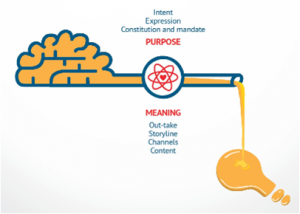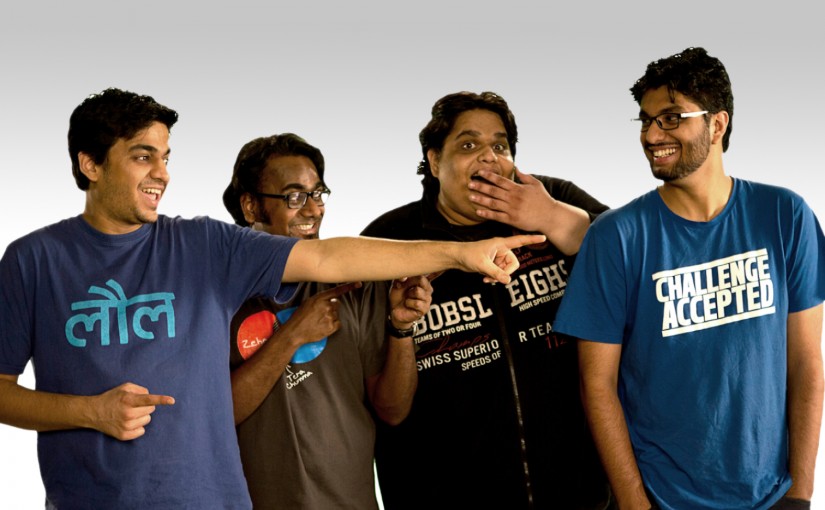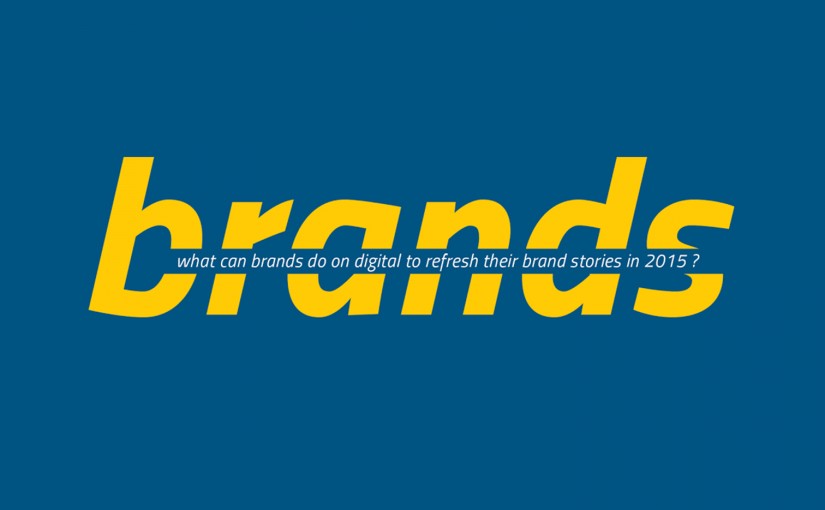Drop us a few lines about the task and we will get back immediately to see we how we can take the discussion forward. Alternately, just pick up the phone and speak with us at +91 9910034330 and we would be happy to help.
- - Do tell us a little about the nature of your business.
- - Be specific about what you’d like us to help you with.
- - Knowing your budget always helps us plan a suitable intervention.
- Blog
Defining Purpose and Meaning in Social Media
-
Defining Purpose and Meaning in Social Media
Our team at Blogworks had recently helped IIM Ahmedabad curate the Colloquium segment for their quarterly journal – Vikalpa. The focus for this segment is on social media and features perspectives from several industry leaders on themes ranging from insights to measurement. I had contributed an article sharing my perspective on the current scenario and where we need to go from here. I have shared the full article below. You can read the complete feature here.
——————————————————————————————————————————————————————–
As a practitioner, it is sometimes hard to believe how much social media has evolved and transformed in its very character in the past few years. The breed of social media that captured the imagination then has increasingly come to be seen today as ‘utopian’ or ‘idealist’ in its orientation.
One of my favourite memories from our early consulting days is a passionate argument in a client’s office on a ‘small’ point around a Twitter contest. While the client insisted on building a step which required the contest participant to ‘follow’ the brand first, we felt this was not the right thing since the choice to ‘follow’ should remain with the user and would be of real meaning if the user decided to ‘follow’ the brand because of a genuine interest and not because it was obligatory to participate. We truly believed that the way to win customers or ‘followers’ was to create an engagement experience so compelling that they would naturally want to get connected with the brand for similar experiences in future. From the client’s perspective, it was easy to assess the success of the programme from the lens of traditional metrics (‘reach’, growth in database, etc. ) but the concept of building goodwill, longterm loyalty (which, we regarded and continue to regard as the true value of social media) was perhaps a bit vague. Let me clarify that by focusing on quality of the experience, we were not suggesting that numbers were of less importance, we had a strong hashtag strategy in place (on a different note, it’s sometimes hard to explain how a hashtag strategy is much more meaningful and effective than @follow for a medium as Twitter). We believed that an implicit call-for-action for users (building a ‘pull’ through the experience) was of long-term value than an explicit push (‘follow’ us on Twitter).
In a world where ‘follow us and win exciting prizes’ contests by brands are the norm and users are happy to transact personal data and network for a potential material gratification – our concerns then appear to be extraneous today. Or do they?
Vanity Fair – Gathering ‘Fans’
In the recent global economic upheavals, from corporate scandals to entire nations on the brink of bankruptcy, if there is a common thread that is at the root of our current problems, it is the relentless pursuit of shortterm success with scant regard for the long-term growth or outcome. The obsession with ‘number of fans’ and ‘owning’ more fans than the competition has become a key driver for brands online, almost akin to the quarter results paranoia in the real world. A layman may question, why is the desire to gather a large
pool of fans such a bad thing for brands? Isn’t achieving a certain number of fans crucial to even justify ‘investing’ in a medium such as social media instead of say TV? The answer is yes and no. In our social media methodology, we have always emphasized the need to build a ‘strong nucleus’ and achieve ‘critical mass’, and to that end, recommended to our customers the need to spend money that can enable inorganic growth (through ads, apps, contests) especially in the infancy stage of the social media programme. There are however two things to keep in mind:1) ‘Scaling up’ has always been a ‘means’ for us to achieve a key business outcome and not an ‘end’ in itself. Given the fear and awe that the medium evokes often among senior management, the social media programme is often reduced to a ‘vanity fair’ of sorts
which has no strategic linkage with the business goals. In a hyper-competitive environment, what ensues is a rat race with higher number of fans than X, Y, Z competitors, becoming an ‘end’ in itself.
2) Facebook, which is the preferred destination for businesses to set up presence, has made several changes in the platform in their own journey towards moneti zation that has had an impact for brands and corporates. By their own admission, the average post by a brand only reaches 16 per cent of overall fans. More than the fan count, it is the engagement count such as ‘People Talking About This’ (number of people who engaged with the page in the past 7 days by liking, sharing, commenting, etc.) that is of relevance. Hence, fan count in isolation is the most misleading metric to gauge social media success.Is This What Engagement Was Supposed To Be?
Now a lot of new media marketers understand that ‘Engagement’ is at the heart of a social media programme. Over the past few years, they have understood that this ‘Engagement’ does not come for free. To make the engagement ‘scalable’ and ‘sustainable’ (not even a social media army can keep a meaningful discussion going 24/7 with a million fans), brands employ a combination of contests, applications, and offers on one hand and on the other build a strong content marketing infrastructure. After all, brands are publishers now and behind every witty tweet or a visually delightful Facebook post, there are a whole host of web designers and copy writers.
Generating a ‘like’ or getting a user to ‘share’ is pursued with a missionary zeal. Sadly, this only helps achieve a semblance of engagement. There are a whole host of ‘strategies’ that help generate such ‘surface’ engagement. One favourite among marketers is using ‘topicality’ to drive conversations. From cricket, movies, current events to special days, a convenient choice to elicit a response/reaction from the audience is to talk about ‘topics’ that make for easy conversation. What is forgotten is the ‘relevance’ of the message. Another favourite term among marketers on Facebook is ‘news feed optimization’. This means tailoring content to formats which are preferred by Edge Rank – the algorithm which decides where (and if) the brand’s content appears in their fan’s newsfeed. For example, the algorithm gives priority to videos and images over text. Hence, there is a mad scramble to churn out more visual content. ‘Shares’ have higher weightage than ‘comments’ which further have a higher weightage than ‘likes’. The logic is that it is indicative of the ‘extent’ of involvement of the user with the piece of content. Sadly, this often is manipulated to elicit the reaction of choice – more ‘shares’ through sensational content, ‘comments’ through contrived ‘call for action’ updates such as ‘My favourite Sunday morning activity is……. ’ and more ‘likes’ through updates such as “Like” if you’ve listened to the Beatles (the last one is a real example).The real value of social content was to add ‘meaning’ to what the brand stands for. Unfortunately, today brands risk eroding their core value by facilitating chatter instead of enabling a meaningful dialogue.
Another ‘risk’ with the way social media marketing has evolved recently is that it seems to be regressing back to days of ‘interruption marketing’. On the face, it is permission-based marketing; a brand can ‘directly’ engage with a user only if the latter has given ‘access’ (say by ‘liking’ a page). By granting access, the user also reposes their ‘trust’ in the brand. This ‘trust’ gets belied when the brand resorts to the same old interruptive techniques – when the focus shifts from interests of the brand’s community to the brand’s own self-interests. In the long-term, this can lead to users tuning-out completely and the entire medium getting discredited as a ‘spam engine’.
Social media is dead. Long live social media.
My colleague, Rajesh, often uses this line to speak of the extinction of the breed of social media that existed during its advent. In a recent blog post, “An Open Letter to Mark Zuckerberg”, he speaks about one of the aspects of this change:“The promise of ‘intimate conversa-tions’ has somewhere taken a back-seat, with the focus on ‘scale’ by most marketers, and perhaps, by channels like Facebook. While scale is critical for most large brands, the danger is that the social medium, and Facebook, run the risk of becoming like mass-media – overwhelming amount of marketing messages in which some content is sandwiched- that the audience were running away from. ‘Fans’ have ended up being a ‘mass’ rather than an individual or a group of ‘individuals’ that a brand could understand, and connect with deeply.”
Co-creation was heralded as one of the virtues of the new age marketing enabled by social media. However, co-creation of thoughts, concepts, ideas, and products can happen when the engagement with the community is deep and not superficial, when brands really ‘know’ their fans and not merely ‘reach’ them. Increasingly, the focus for marketers has shifted from community ‘building’ to community ‘management’. A true community, by definition, is participatory and an evolved community is driven by users than really ‘managed’. However, in reality, communities seeded by brands tend to continue to be ‘driven’ by brands themselves, where they act as ‘gatekeepers’ instead of facilitators.
There is a need to re-look at the community, not as an entity that needs to be ‘managed’, but as one that lives shared values and can play an important role in problem solving. I also feel that brands need to take their role as ‘publishers’ on social media with a pinch of salt. The ‘need for speed’ leaves little scope for checks and balances on the accuracy or introspection of ‘value’ of the message being shared. The anxiety to remain ‘top of mind’, ‘in consideration set’, ‘always engaged’ means frequency takes precedence over the ‘message’. This inflation of chatter and recession of message is of little value in the long term. It only leads to bringing the discourse down to suit the ‘lowest common denominator’.
Finally, there is an urgent need to re-look at how social media efforts of businesses are measured. Brands need to look beyond output generated (no. of ‘fans’, ‘engaged fans’) to more meaningful measures at an outcome level. There is a need to draw a co-correlation with impact on brand health, sales, and organizational efficiency among others.
Purpose and Meaning
It is absolutely imperative that brands and organizations first define their purpose for existing on social media, linked with their business objectives and goals. Who does the brand want to engage with? What does the brand hope to achieve from its social media efforts? How will this intent come alive on social media channels? Which initiatives will help attain these goals? These are questions that need to have answers in place.The next step is to define what the value is, that the stakeholders will find in initiatives and in engaging with the brand. Any interaction between the brand and its stakeholders must be of value of the stakeholders. This is how brands can remain relevant, and go on to become brands for the future.
It is only when you know where you want to go, that you can figure out how to get there. And once the destination is in place, getting there is not difficult.
Disclaimer: Views of authors are personal and do not represent the views of Blogworks, or any of its clients.
-
Contact
conversations@blogworks.in
+91-9910034330 -
Newsletter
-
Social



























